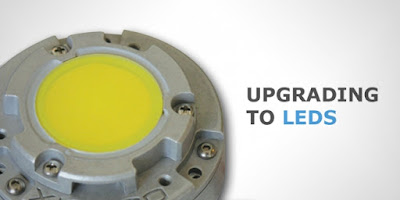7 Factors To Consider When Upgrading To LEDs | Lighting Solutions
A checklist of the most important factors to consider when upgrading to LEDs has been compiled by Bright green to help facilities managers make smart lighting decisions.
As electricity prices soar upwards, now is the perfect to time to replace inefficient, ever-breaking halogen downlights with long-life, high efficacy LED retrofit downlights. LED technology is the latest and greatest in lighting, with lights available that are fully compatible with all existing halogen fittings, transformers and dimming systems.
LEDs have the ability to cut electricity bills by 80 percent, while lasting 35 times longer than halogen lights. On top of this, they are simply installed like any new light bulb, eliminating the need for an electrician. There a lot of different types of LEDs on the market, however, all with different specifications. To help with your decision, we have compiled a checklist of the most important factors to consider when upgrading to LEDs.
7 Factors While Upgrading To LEDs
1. Energy Efficiency
One of the most important things to look out for when installing LED downlights is their efficiency. While halogens provide a high quality and bright light, their energy use of 50 watts is far too inefficient.
LED lights are the most efficient on the market, with halogen replacements using just 10 watts of power a fifth of what halogens generally run on.
With the recent introduction of the carbon tax and electricity price hikes, it is important to have a light that minimises electricity use. Instead of being hit with monstrous electricity bills you can significantly cut your lighting running costs.
Search online for a retrofit calculator to see how much money you can save from LED lighting as well as estimate the time it will take to achieve return on investment.
2. Brightness
It is important to ensure that you choose a light of adequate brightness, not only to meet AS 1680 requirements for lux levels, but also to create an inviting and ambient environment.
One way to ensure that you are choosing a light that is bright enough is to find one that matches the brightness of a halogen. The brightness of halogen lights, according the Department of Climate Change and Energy Efficiency, is 720 lumens, therefore you should seek a replacement that has 720 lumens of light.
3. Color Rendering Index (CRI)
CRI is a measure of a light’s quality and determines how well colors, furnishing and people appear, as well as creating a warm and ambient environment.
While CFLs (compact fluorescent lighting) have a CRI of just over 50, LEDs have a CRI of 90, much closer to natural light (which is rated at 100) and the same as halogens.
This helps to make rooms look at their best and create an inviting environment. When matched with 720 lumens, it also means your LED replacements will provide the same amount of light as halogens.
4. Durability
It is necessary to make sure that your lights last for as long as possible. As a facilities manager you know how important it is to make sure that you don’t have lights that are constantly blowing.
Leading LEDs last for 70,000 hours, which equates to over 15 years with 12 hours use per day. Once LEDs are installed, lighting can be forgotten about until many years down the track.
5. Compatibility
To ensure a risk-free retrofit, make sure that you purchase lights that have the ability to work with your existing lighting setup.
Find a light specifically tailored for retrofitting that is compatible with all existing transformers, dimmers and halogen ceiling fittings.
This eliminates the need for an electrician to install the lights or make new cutouts in the ceiling.
6. Thermal Monitoring
The leading lights on the market are built with onboard thermal monitoring systems. The key to LED lights is keeping their running temperatures low. This prolongs their life.
While LEDs run at a considerably low temperature, if they do start to get too hot, the lights will automatically dim. This not only saves the light itself, but completely eliminates the risk of fire.
LEDs that have the best thermal monitoring systems and survive heat are designed in Australia. Make sure you purchase locally designed lights, as these are built to handle our rugged conditions.
As LEDs run at a much lower temperature than halogens, they also keep room temperatures down, which lowers the strain on air-conditioners, resulting in even greater electricity savings.
7. Warranty
As it is a fast growing industry, there are a lot of cheaper LED lights being produced that aren’t of a high quality. To ensure that you are buying quality lights, make sure they come guaranteed with a long warranty, generally around three years.
Established over 20 years ago Projection Lighting is one of the UK’s most successful retail display and architectural luminaire manufacturers.
Alpha LED is the market leading brand of LED fixtures. Successfully launched in 2008, the corrective cold phosphor technology delivers an unrivalled performance and is the only LED product that not only guarantees a minimum five years life but also the quantity and quality of the light during the initial 5 years period.
This is one of the many reasons why the product continues to win high profile prestigious projects all over the world and is rapidly becoming the first choice technology for lighting professionals.


Comments
Post a Comment